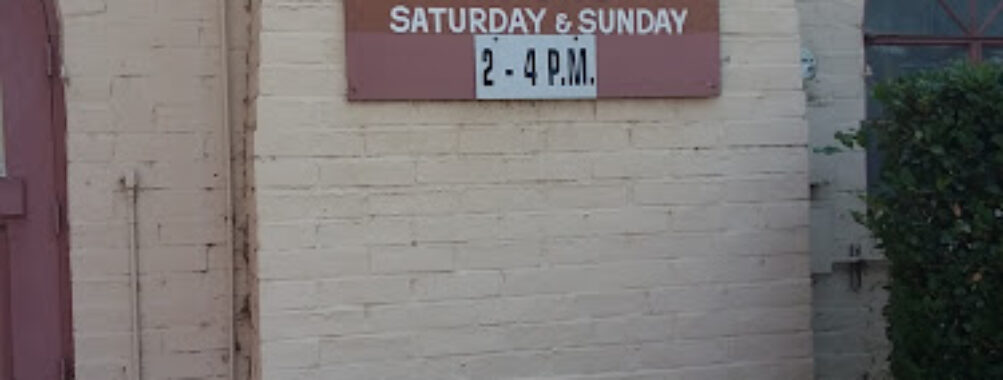
Monterey Park Historical Museum
Table of Contents
Description
The Monterey Park Historical Museum offers a fascinating glimpse into the rich tapestry of one of Southern California’s most intriguing communities. If you’re a bit of a history buff or just someone who likes to uncover the stories behind a city’s growth, this place quietly delivers without making a fuss. It’s not one of those mega museums with endless galleries that leave you wondering where time went—it’s a cozy, approachable spot that lets you step back into Monterey Park’s past in a very personal way.
You’ll find exhibits that spotlight local milestones, from the early days when this area was mainly farmland to its transformation into a bustling suburb with a unique cultural blend. What really stands out here is the museum’s ability to balance the grand with the everyday. Instead of just the usual historical dates and dusty relics, the displays often have this charming, down-to-earth vibe. It’s like having a conversation with someone who knew the neighborhood back in the day—sharing stories about the old buildings, the shops that used to line the streets, and the traditions that helped shape the community spirit.
Accessibility is thoughtfully handled here. The museum doesn’t just talk the talk on being welcoming—it’s genuinely wheelchair accessible, from parking to restrooms and entrances, which, honestly, isn’t always a given in small local museums like this. So, if you’re bringing family members or friends with mobility needs, you’ll find it a comfortable and stress-free experience.
One thing you might want to know: there’s no restaurant or café inside, so grab a snack before you arrive or plan to explore local eateries nearby afterward. But don’t let that put you off—the museum itself is set up with clean, well-maintained restrooms, which make a quick visit hassle-free.
And speaking of families, if you’re traveling with kids, this place works pretty well. The exhibits are engaging enough to catch younger eyes without overwhelming them. Sometimes, that’s a tricky balance to pull off in historical settings, but Monterey Park Historical Museum manages to keep things interesting with its hands-on displays and clear, simple storytelling.
Overall, the museum is kind of a hidden gem in the area. Not the flashiest tourist spot, but a solid, authentic experience if you want to get a feel for Monterey Park’s evolving identity. It’s educational, accessible, and just the right size to give you a meaningful visit without lasting that museum fatigue everybody talks about.
Key Features
- Wheelchair accessible entrance, parking, and restrooms—making it easy for all visitors
- Exhibits highlighting Monterey Park’s transition from farmland to bustling city
- Personal stories and local artifacts that bring the community’s history alive
- Family-friendly atmosphere with engaging displays for children
- Clean and convenient restroom facilities
- Quiet and manageable size—captures attention without overwhelming
- Staff who are knowledgeable and genuinely passionate about local history
Best Time to Visit
If you’re wondering when to swing by, weekdays, preferably mid-morning to early afternoon, are your best bet to dodge crowds and soak in the exhibits at your own pace. Weekends can get a touch busier, especially if there’s a community event nearby, but it’s never elbow-to-elbow packed. Spring and fall offer the most pleasant weather for wandering around outside before or after your visit. Summers in Southern California heat up quickly, and since the museum offers no on-site refreshments, having a cooler day definitely adds to the comfort factor.
Also, keep an eye out for special events or temporary exhibits—they sometimes organize workshops or talks that offer deeper dives into local history topics. Those can be a real treat if you’re ready to nerd out a bit more.
How to Get There
Driving is probably the easiest way to get to the Monterey Park Historical Museum. There’s accessible parking right by the entrance, so you won’t be trekking across a big lot or street. If you’re relying on public transport, the area is served by local bus lines, but you might need to plan a bit more carefully with timing and transfers. It’s worth checking schedules in advance if you’re coming from downtown Los Angeles or surrounding neighborhoods.
For those who prefer biking or walking, the museum is situated in a relatively pedestrian-friendly part of town. Just remember, Southern California’s weather can be warm, so bring water and maybe a hat if you’re planning to stroll. Once you get there, the location feels like a small slice of historic charm amid the ongoing city bustle, giving you that satisfying contrast between past and present.
Tips for Visiting
- Come early in the day to fully enjoy the exhibits without rushing.
- Bring a camera—photography is generally allowed, and some of the displays are truly photo-worthy.
- If you’re bringing kids, keep the visit interactive by asking questions or pointing out interesting artifacts; it makes history come alive.
- Wear comfortable shoes. Even though the museum isn’t huge, you’ll want to explore at a leisurely pace.
- Check ahead for any scheduled events or workshops to get extra value from your visit.
- Don’t forget water and snacks, since there isn’t a dining option inside.
- Chat with the staff—they’re often local experts eager to share insider stories you won’t find in the exhibits.
- Plan some time to walk around the neighborhood afterward; the mix of architecture and local shops adds a nice cherry on top to your museum outing.
Location
Places to Stay Near Monterey Park Historical Museum
Find and Book a Tour
Explore More Travel Guides
No reviews found! Be the first to review!